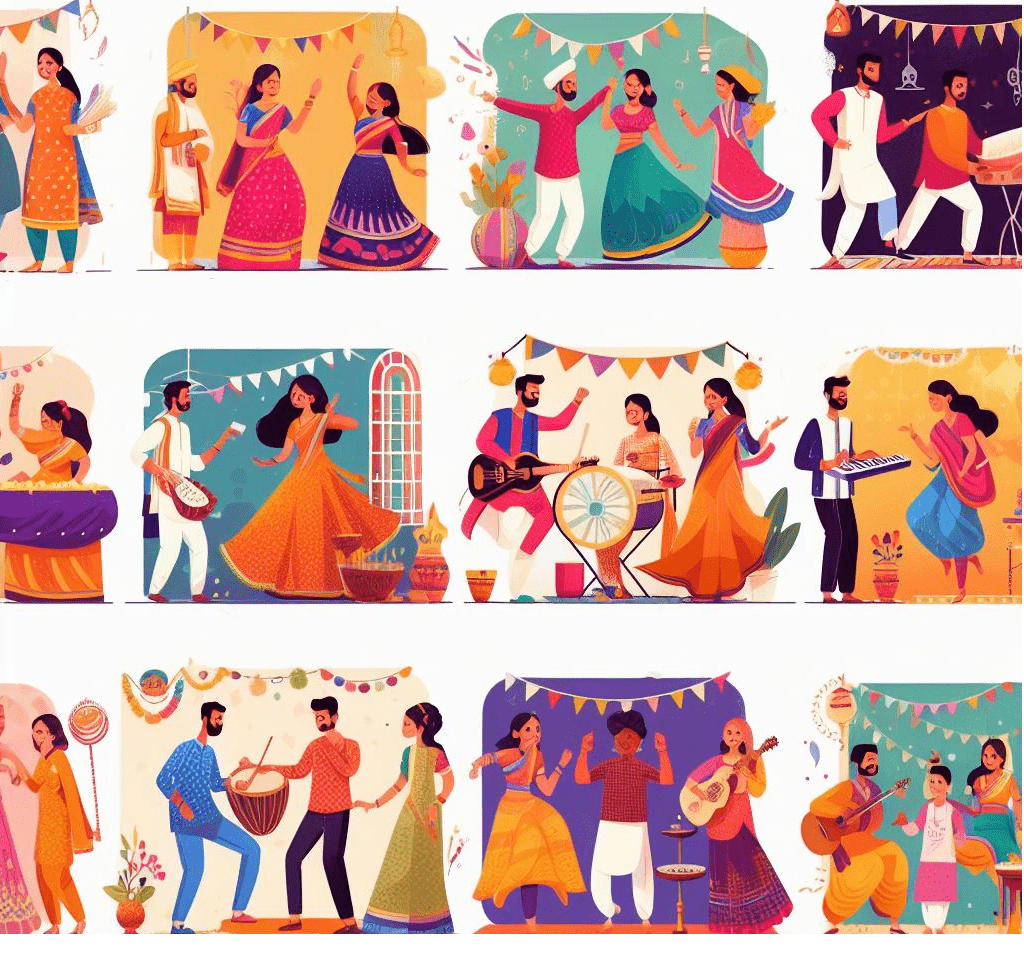Hindu Navaratri Celebration Essay: Embracing the Divine Navratri Utsav
Navaratri is also known as Navratri Utsav which is spiritually significant Hindu Festival celebrated with great enthusiasm and devotion across India and other parts of the world. Navratri is spans of nine nights, represent the victory of good over evil and the worship of the divine feminine. In this essay, We will dive into the Navaratri celebration and cover all the points i.e. who celebrates it, what it involves, where it’s celebrated, when it takes place, why it’s celebrated, which gods and goddesses are revered, whose devotion it evokes, and how people observe this festival.

Who Celebrates Navaratri?
Navaratri is celebrated by millions of Hindus around the Globe. Who lives in across India and other parts of the world
What is Navaratri?
Navaratri “Nine Nights”, A festival which is dedicated to the worship of the goddess Durga, who represents the divine of feminine energy. Each of the nine nights is associated with different forms of the feminine goddess, known as the Navadurga. These forms comprise Shailaputri, Brahmacharini, Chandraghanta, Kushmanda, Skandamata, Katyayani, Kalaratri, Mahagauri, and Siddhidatri. Devotees pray to these forms of the feminine goddess throughout the Navaratri and seeking blessings, protection, and the strength to overcome the obstacles in life.
Where is Navaratri Celebrated?
Navaratri is celebrated with great zeal across the world where Hindus live especially in India. Every part of the country has a different tradition of celebrating the Navaratri Utsav. In the northern side of India, i.e. Gujarat and Rajasthan, it is celebrated by dance forms like Garba and Dandiya Raas. In the southern side of India, especially Karnataka and Tamil Nadu, people display dolls and figurines in their homes, known as Golu or Bommai Kolu. The eastern and western sides of India also have distinct traditions and customs associated with Navaratri.
When Does Navaratri Utsava Celebrated?
Navaratri Utsava is decided by the Hindu calendar, which comes between the months of September or October of every year. The utsava is a total of nine nights and ten days, with the most significant celebrations taking place during the first three days (known as Durga Puja), and next three days (Lakshmi Puja), and the final three days (Saraswati Puja). The tenth or last day is celebrated as Vijayadashami or Dussehra, which represents the victory of good over evil.
Why is Navaratri Celebrated?
Navaratri Utsava is keen spiritual amoung the Hinduism. It pay tribut to the victory of Goddess Durga over the demon, represent the victory of good over evil. It is also a time for devotees to seek the blessings of the goddess for prosperity, wisdom, and protection from negative forces. Navaratri is an opportunity to deepen one’s spiritual connection, cleanse the mind, and foster devotion to the divine.
Which Deities are Worshipped During Navaratri?
During the whole Navaratri Utsava, the main focus is on the goddess Durga, other deities are also being worshipped during this Navratri. In parts of eastern India, such as West Bengal, Durga Puja is celebrated with glory. In the northern part of India, Goddess Lakshmi is worshipped during the second day. The final three days are dedicated to Goddess Saraswati, music, and art. Each of the deities represents essential aspects of life and is revered for their divine qualities.
How is Navaratri Celebrated?
The celebrations of Navaratri utsava are observed differently depending on different regions of India. In Gujarat which is the northern side of India, where people participate in the Garba and Dandiya dances and wear traditional attire and jewellery and on the other side of India such as West Bengal, Durga Puja march, artistic idols of the goddess, and cultural performances. In the southern states of India, families arrange Golu displays in their homes, inviting friends and relatives to view the figurines and seek blessings. Fasting, prayers, and meditation are also common practices during Navaratri, as devotees seek spiritual purification and divine grace.
In conclusion, we understand the importance of Navaratri in regards to Hindus, which is of great spiritual significance, celebrating the divine feminine energy and the victory of good over bad. In addition to its spiritual importance for Hindus, Navaratri is also a reflection of India’s rich cultural diversity, with each part offering its unique flavour to the Navaratri utsava. As Hindus and people of various backgrounds come together to celebrate Navaratri, they not only honor the goddess but also the unity and cultural richness of India itself.




